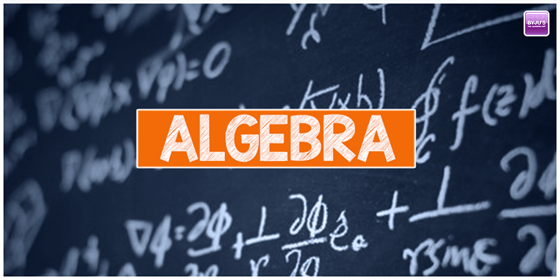One of the important branches of Mathematics, which plays a pivotal role in everyone’s lives, is “Algebra”. Algebra is almost used in all the activities in our everyday life in the form of numbers and equations. For many students, algebra sounds like rocket science. Algebra is considered as an integral part of mathematics, and which is mandatory in the high school curriculum. In brief, algebra deals with the numbers and symbols, and the rules that manipulate the symbols. It is used to find the unknown value of the variable in an equation.
For example, to find the unknown value of any statement, formulate the statement into an algebraic equation. By solving the algebraic equation, we can get the solution of the unknown value. In algebra, based on the operation, function type, and the position of the variable, the expressions can be classified into monomial, binomial, trinomial. If an expression has only one term, then it is called a monomial. If an algebraic expression has two terms, then it is called a binomial, and if the expression has three terms, then it is called a trinomial. In simple words, if the expression has more than one terms, then it is termed as polynomials. Based on the degree, and the number of variables in an equation, the equation is categorized into different types, such as linear equation, quadratic equation, radical equation, and so on. Here, let’s learn what linear and quadratic equations are, and different methods used to these equations.
Linear Equations
A linear equation is an equation, in which the highest power of the variable in a term is 1. Based on the number of variables in the equation, the linear equation is categorized into different types, namely:
- Linear Equation in One Variable – The standard form of this type is ax+b= 0, where a≠0, and x is a variable.
- Linear Equation in Two Variables – The standard form of this type is ax+by+c = 0, where a, b ≠ 0. Here, x and y are variables.
- Linear Equation in Three Variables – The standard form of this type is ax+by+cz+d = 0 where a, b, c≠0. Here, the variables are x, y and z.
Linear equation in one variable is solved by keeping the variable on the left-hand side (L.H.S), and the constant term on the right-hand side (R.H.S) of the equation. After that, we have to solve for the unknown variable. Whereas, linear equations in two variables can be solved using different methods, like substitution method, elimination method, determinant method, cross multiplication method.
Quadratic Equations
A quadratic equation is defined as an equation whose highest degree of the equation is 2. The quadratic equation is of the form, ax2 + bx+c= 0, where the value of “a” should not be equal to 0 (i.e., a ≠ 0). If the coefficient of a is equal to 0, we can say the quadratic equation is a linear equation. Here, “x” is a variable. The solution of the quadratic equation is called the roots. The roots of the quadratic equation can be easily found using the formula,
x = [-b ±√( b2– 4ac)] / 2a
Generally, students prefer this method to solve the quadratic equation questions, as it provides an accurate result, and it saves the times by substituting the values of a, b, and c. Apart from this formula, the quadratic equations are solved using completing the square method or factorization method. The symbol “±” indicates that the quadratic equation has two solutions. The solution obtained may be either real solutions or complex solutions, which can be easily identified by the discriminant value. To learn more on algebraic equations, subscribe to BYJU’S YouTube channel, and watch many interesting videos.













